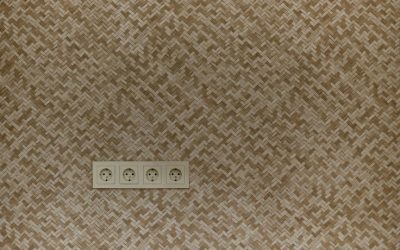Keeping carpets clean is essential for maintaining a healthy and aesthetically pleasing environment. With numerous methods available, selecting the best carpet cleaning process can be challenging. This article explores various carpet cleaning techniques, their benefits, and the scenarios in which they excel.
Understanding Carpet Cleaning Needs
Carpets can accumulate dirt, allergens, and stains over time, necessitating regular cleaning. The best carpet cleaning process depends on the carpet type, the level of soiling, and specific concerns such as allergen removal or stain elimination.
Hot Water Extraction (Steam Cleaning)
Carpet Hot Water Extraction, commonly known as Steam Cleaning, is widely regarded as the most effective carpet cleaning method. This process involves spraying hot water mixed with a cleaning solution onto the carpet, agitating the fibers, and then extracting the water along with dirt and debris.
Advantages of Hot Water Extraction:
- Deep Cleaning: Penetrates deep into the carpet fibers, removing embedded dirt and contaminants.
- Allergen Removal: Effectively eliminates allergens such as dust mites and pet dander.
- Stain Removal: Highly efficient at removing various stains, including oil and grease.
Ideal Situations for Hot Water Extraction:
- High-traffic areas require thorough cleaning.
- Homes with pets or individuals with allergies.
- Stubborn stains and heavily soiled carpets.
Dry Carpet Cleaning
Dry Carpet Cleaning is a method that uses minimal water, relying instead on specialized cleaning compounds or powders. These compounds are applied to the carpet, where they absorb dirt and are then vacuumed away.
Advantages of Dry Carpet Cleaning:
- Quick Drying Time: Carpets are dry and ready for use almost immediately.
- No Residue: Leaves no sticky residue behind.
- Convenient: Ideal for businesses or areas where downtime is a concern.
Ideal Situations for Dry Carpet Cleaning:
- Commercial spaces need frequent cleaning.
- Low-moisture environments.
- Maintenance cleaning between deep cleans.
Bonnet Cleaning
Bonnet Cleaning involves using a rotating bonnet or buffer machine with a cleaning solution. The bonnet absorbs dirt from the carpet surface, making it suitable for light cleaning tasks.
Advantages of Bonnet Cleaning:
- Surface Cleaning: Efficient for surface dirt and maintenance cleaning.
- Cost-Effective: Less expensive compared to other methods.
- Quick and Convenient: Minimal drying time, suitable for busy areas.
Ideal Situations for Bonnet Cleaning:
- Routine maintenance in high-traffic areas.
- Situations where quick drying is essential.
- Commercial settings such as hotels and offices.
Encapsulation Cleaning
Encapsulation Cleaning utilizes synthetic detergents that crystallize into powder form when drying. The detergent is applied to the carpet, agitated, and then vacuumed, encapsulating dirt particles.
Advantages of Encapsulation Cleaning:
- Efficient Soil Removal: Encapsulates and removes dirt effectively.
- Fast Drying: Dries quickly, minimizing downtime.
- Eco-Friendly: Uses less water and is more environmentally friendly.
Ideal Situations for Encapsulation Cleaning:
- Routine maintenance and light cleaning.
- Commercial settings needing frequent cleaning.
- Eco-conscious environments.
Shampooing
Shampooing involves applying a foamy cleaning solution to the carpet and scrubbing it with a rotary brush machine. The solution is then vacuumed up, along with dirt and grime.
Advantages of Shampooing:
- Effective for Heavy Soiling: Ideal for heavily soiled carpets.
- Deep Cleaning: Penetrates deep into the carpet fibres.
- Cost-Effective: Generally more affordable than other deep cleaning methods.
Ideal Situations for Shampooing:
- Heavily soiled carpets require intensive cleaning.
- Areas with significant foot traffic.
- Pre-cleaning before hot water extraction.
Comparative Analysis of Carpet Cleaning Methods
Choosing the best carpet cleaning process involves considering several factors:
- Carpet Material: Delicate carpets may require gentler methods like dry cleaning or encapsulation.
- Soiling Level: Heavily soiled carpets benefit from deep cleaning methods such as hot water extraction or shampooing.
- Allergen Concerns: Hot water extraction and dry cleaning are effective for allergen removal.
- Drying Time: Dry cleaning and encapsulation have the shortest drying times, ideal for busy environments.
Conclusion
In conclusion, the best carpet cleaning process depends on the specific needs of your carpet and environment. Hot Water Extraction stands out for its deep cleaning capabilities, making it suitable for most residential and commercial settings. Dry Carpet Cleaning and Encapsulation Cleaning offer quick drying times and are perfect for routine maintenance, while Bonnet Cleaning and carpet Shampooing provide cost-effective solutions for surface cleaning and heavy soiling, respectively. Understanding these methods will help you choose the most appropriate cleaning process for your carpets, ensuring longevity and cleanliness.




0 Comments